What are the characteristics of Kenyan coffee varieties? why do Kenyan AA coffee beans taste so sour?
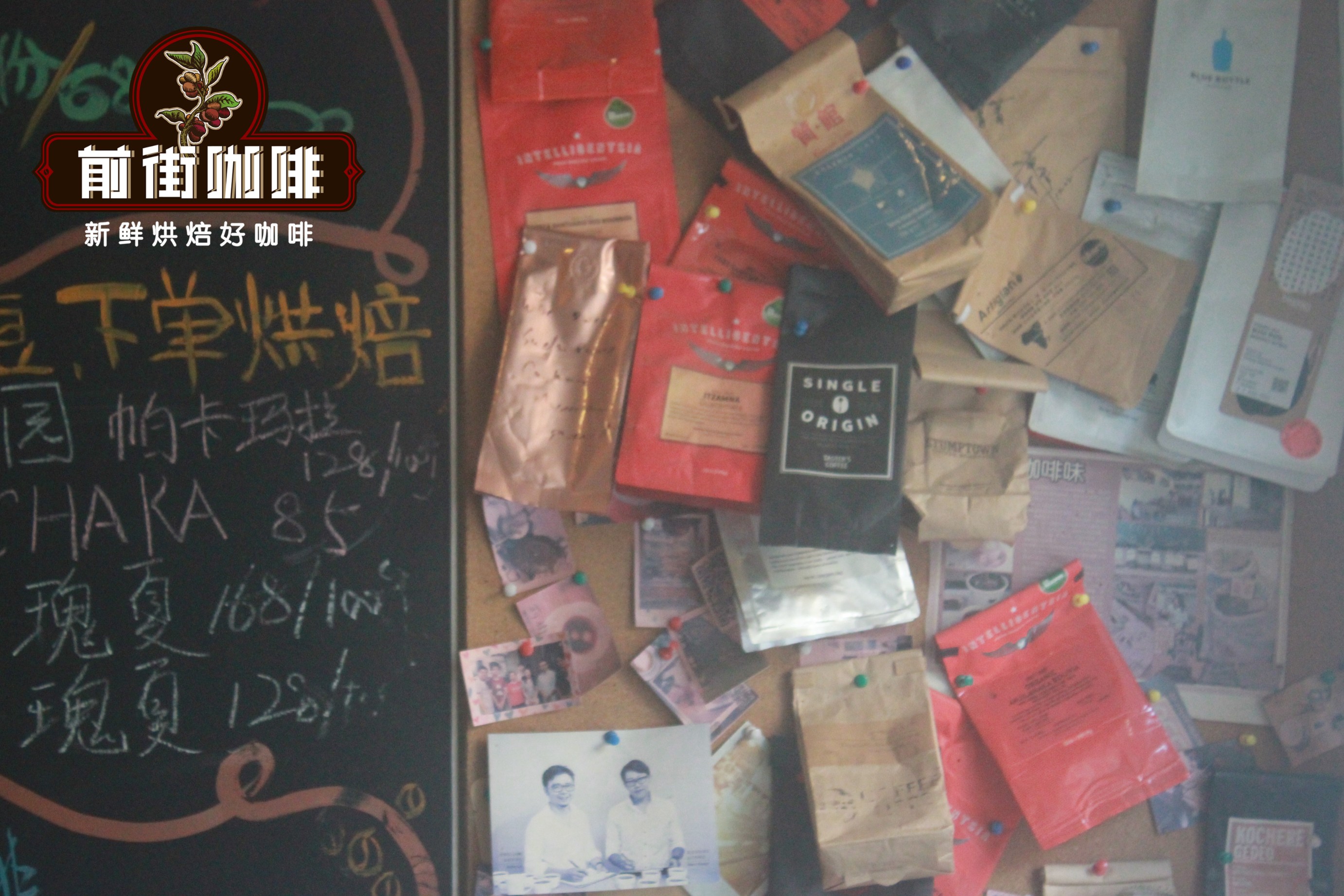
Most of the friends who order one-handed coffee at the front street store prefer African coffee beans if they don't want a special flavor. However, the African continent is so large and there are so many countries. How will everyone choose their own bean? If you are a beginner coffee lover, their first choice is most likely to be Ethiopia's Yegashefi or Sidama. However, many coffee drinkers do prefer Kenyan coffee beans because Kenyan coffee is characterized by wild berry fruit flavors. Next, Front Street Coffee will talk to you about Kenyan coffee beans in detail.
history
It is well known that coffee originated in Ethiopia. Although it is adjacent to Ethiopia, the birthplace of coffee, coffee cultivation has a short history. There are also two versions of Kenya's coffee growing history:
Coffee is believed to have been brought to Kenya by Holy Spirit Church priests in the late 19th century, most commonly by French Holy Spirit priests from Reunion Island (Bourbon Island, where bourbon coffee was discovered) in 1893, or from Ethiopia.
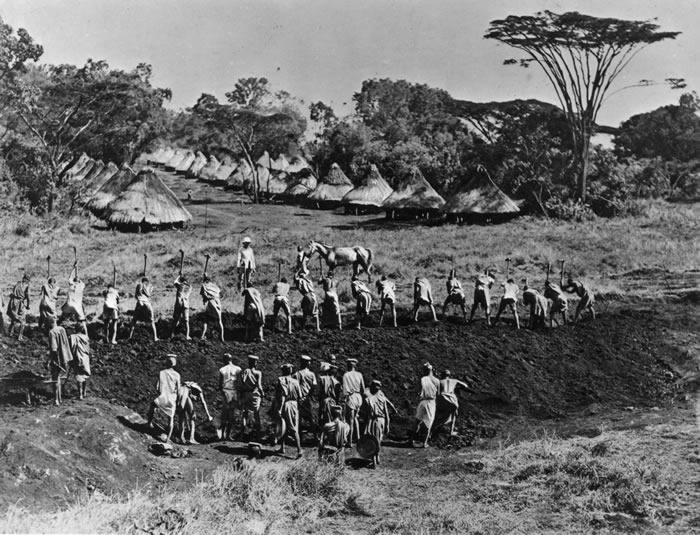
According to Kenneth Davids, founder of Coffee Review, in his 2001 article Coffee from Africa and Arabia : Kenya Coffee, coffee was introduced to Kenya by the British around 1900.
What we do know is that Kenya was colonized by the British Empire in 1895, controlled by the British Empire and placed under the "East African Protectorate", so the British controlled agriculture in the region during that time, including coffee cultivation. In 1933, the Kenya Coffee Council was established. In 1934, the auction system was established and is still in use today. It wasn't until the 1960s that Kenyans began to have the right to grow and process their own coffee.
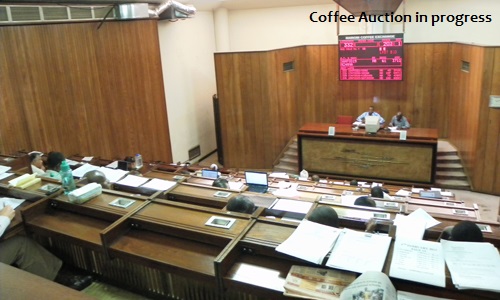
By the late 1980s, Kenya coffee reached its peak, with annual production reaching 130,000 tons. However, Kenya's coffee industry has shown signs of decline in recent years, with annual production of only about 40,000 tons. Thankfully, Kenyan authorities have developed a coffee revitalization plan to save the country from the decline of the coffee industry.
producing areas
A look at James Hoffmann's World Coffee Map shows that Kenya's coffee is mostly grown in the central region of the country, and that high-quality coffee also comes from here.
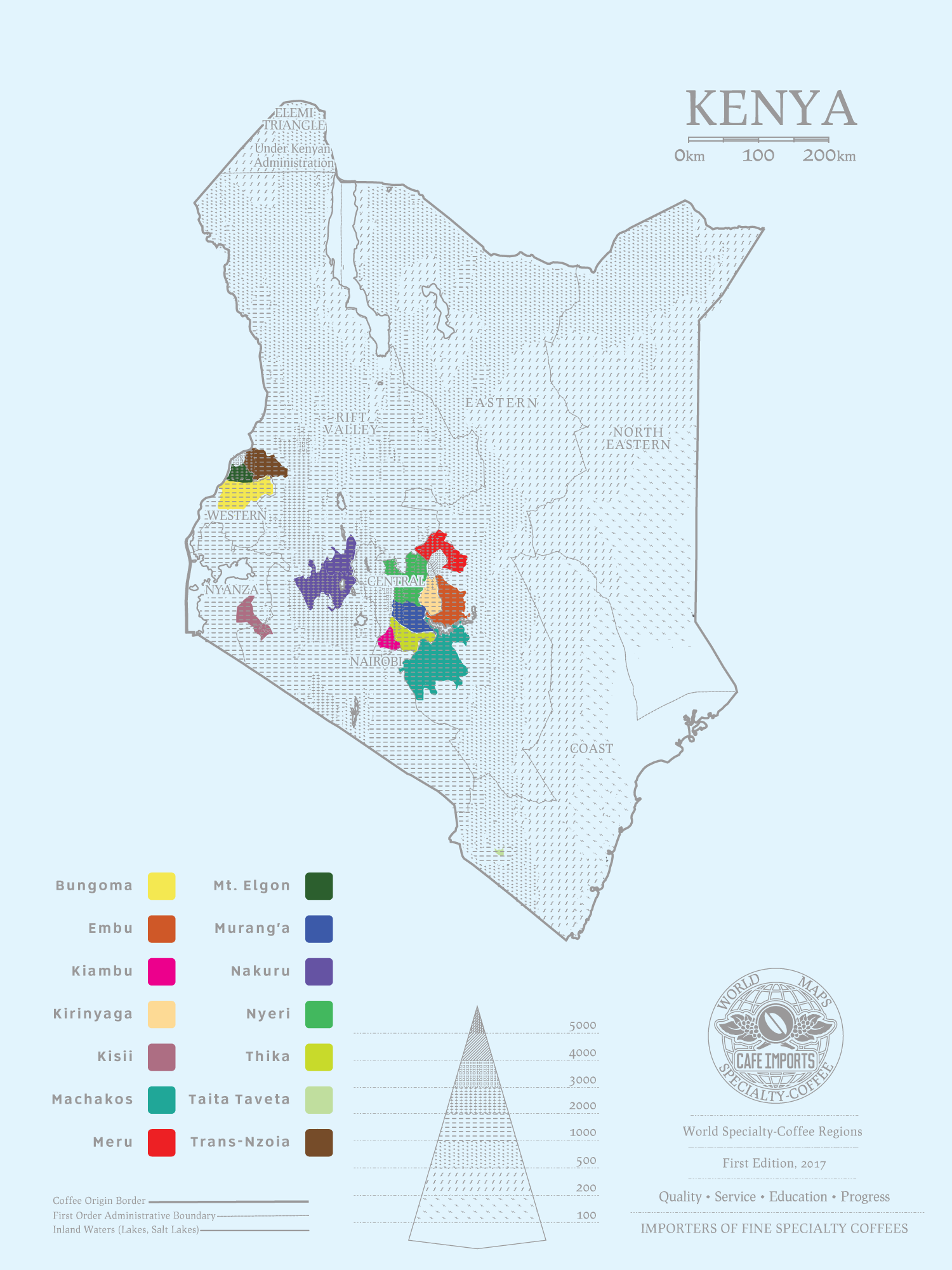
Among Kenya's 14 coffee-growing regions, Kiambu and Muranga produce coffee with bright acidity and a thick touch; Nyeri coffee with bright blackberry and heavy oil, with citrus and even floral notes; and Kirinaga coffee. Kirinyaga coffee is bright acidity and moderate fat and delicate sweetness; Embu coffee has a moderate acidity, balanced flavor and a pleasant aftertaste; Machakos coffee has a refreshing fruity acidity, delicate flavor, moderate touch, delicate and fresh aftertaste; Kisii and Elgon coffee has a solid sweetness and mild flavor.
hierarchy
When you order Kenyan coffee in a cafe outside, it's not hard to spot the letters AA if you look closely at the grade. Front Street Coffee's baristas will also be asked by novice coffee lovers, is Kenya AA the highest rating? How are they graded?
Kenya coffee beans are classified into eight grades according to the size of the beans: E, PB, AA, AB, C, TT, T, MH/ML.
Front Street Coffee needs to be reminded here that the grade of coffee beans is set before roasting, so don't think about sifting the roasted coffee beans.
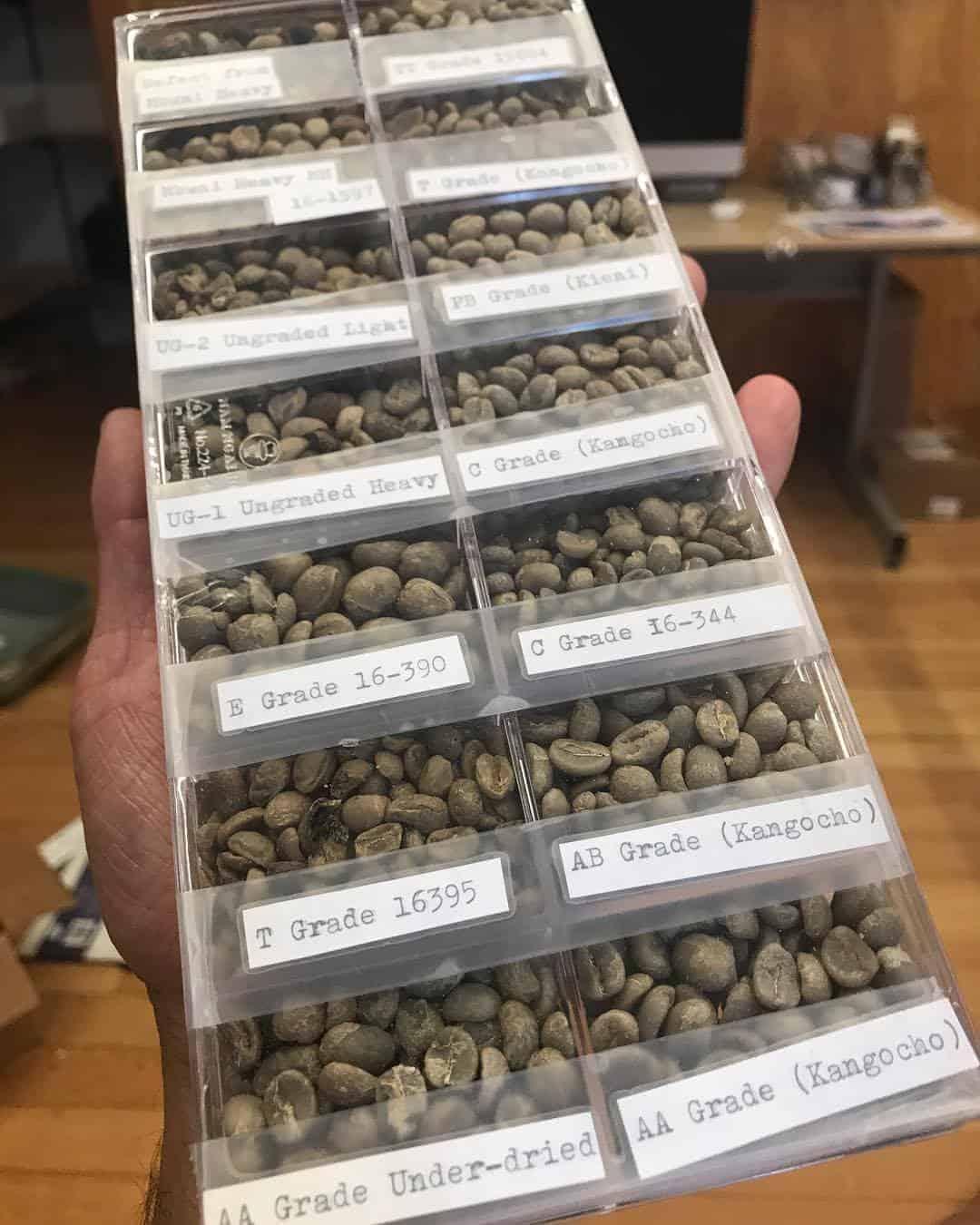
E: Kenya E is called elephant bean, large in size and relatively small in yield.
PB: PB's English name is Peaberry, also known as round beans, oval shape. A normal coffee fruit contains two coffee seeds, while a round bean contains one seed.
AA: Kenya AA is arguably the most common grade, with a larger size of 17/18 mesh.
AB: Particle size is 16/17 mesh.
C: Particle size below 14 mesh.
TT: Large in mesh but low in density and of sufficient quality to be classified as a fine coffee.
T: Below 14 mesh, small particles, density and quality are not enough to be included in fine coffee.
MH/ML: Low-quality sun-dried beans, mostly over-ripe beans dried on trees.
Why Kenya Coffee Beans Are So Sour
When a coffee lover asks,"I want the tart bean," the barista at Front Street Coffee recommends Kenya Azalia first. Kenya's acidity is bright and clean, which is also the characteristic taste of Kenyan coffee.
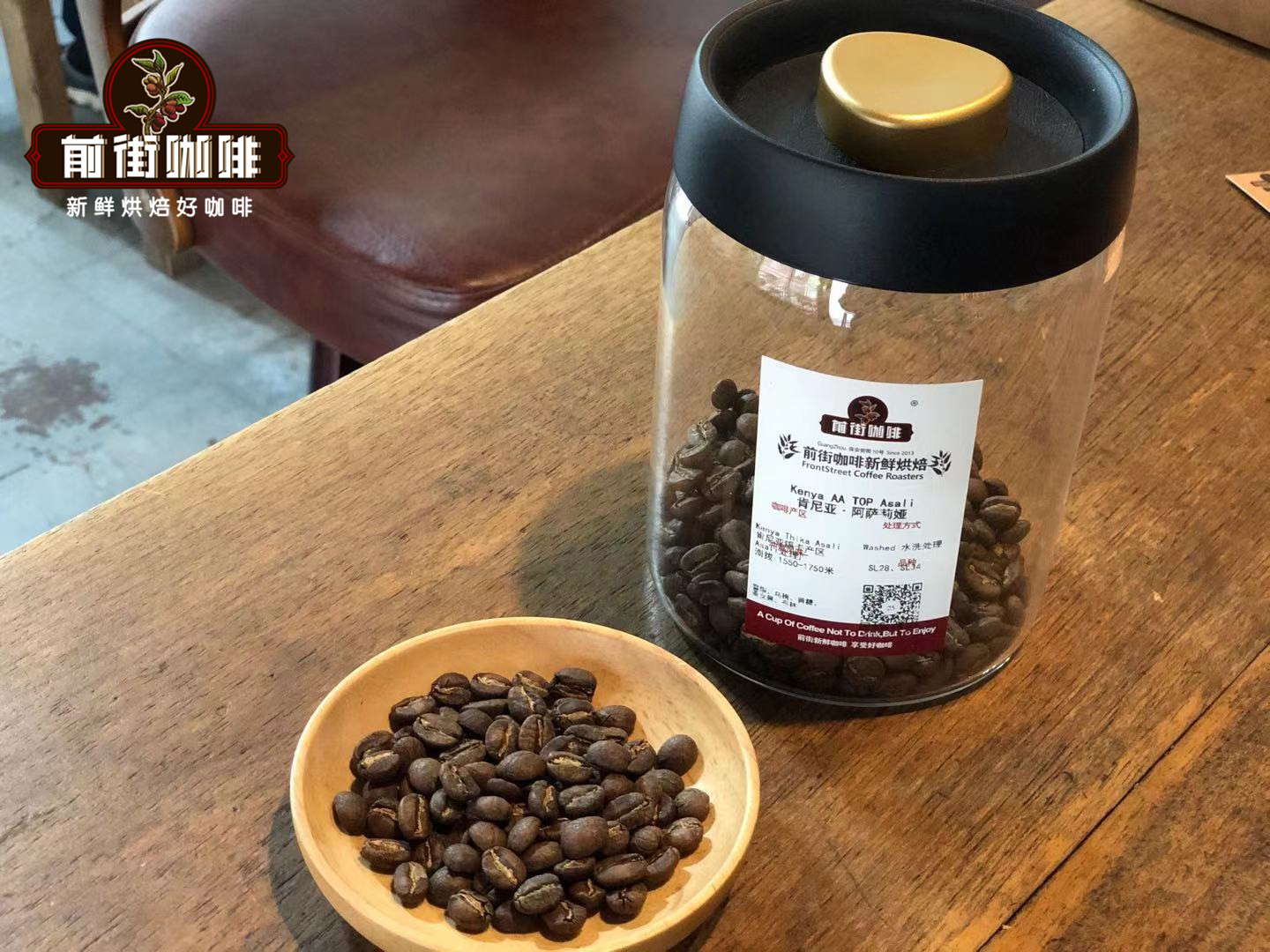
Front Street Coffee Kenya Azalia
Production area: Sika, Kenya
Altitude: 1550m--1750m
Treatment method: K72 washing treatment
Varieties: SL28, SL34
If you want to discuss how Kenya coffee beans come into being, you have to mention Kenya's local growing environment, coffee varieties and processing methods.
Kenya's red volcanic soil, where coffee is grown, contains large amounts of phosphoric acid. In addition, SL28 and SL34, two common coffee varieties in Kenya, are varieties of bourbon. Front Street also found that berry fruit aroma was prominent in SL28 and SL34 through cup testing of multiple Kenyan coffee beans.
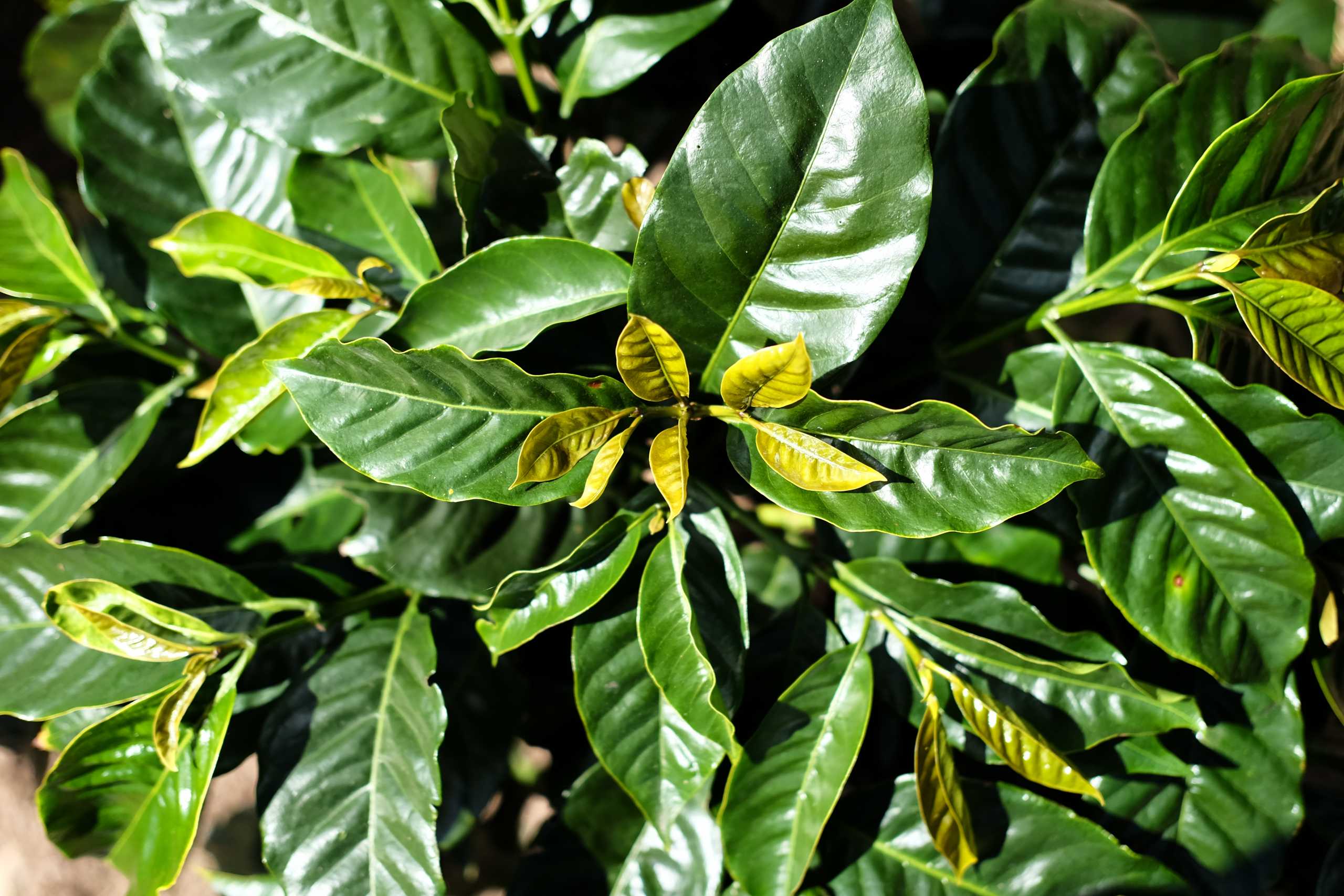
Kenya's coffee is so clean and bright thanks to Kenya's unique post-processing method, Kenya's 72-hour washing process. Kenya's 72-hour washing process is also known as K72 washing process.
After removing the peel of coffee cherries, the shelled beans with pectin are put into a fermentation tank for dry fermentation without adding water, and the shelled beans are washed with water every 6- 8 hours and drained for repeated dry fermentation, which takes 24 hours.
In the second stage, the fermentation tank is not filled with water, fermentation for 12- 24 hours, and then manually introduced into the washing channel to remove most of the pectin by stirring.
The second stage is to repeat the step of primary fermentation. In this stage, the water injected into the fermentation tank is full, and then the secondary fermentation is carried out in clean water. The secondary soaking time is 12- 24 hours. The small amount of sugar and pectin remaining on the surface of the shelled beans continues to ferment and is finally removed. Finally, move the coffee beans to a tanning bed to dry in the sun.
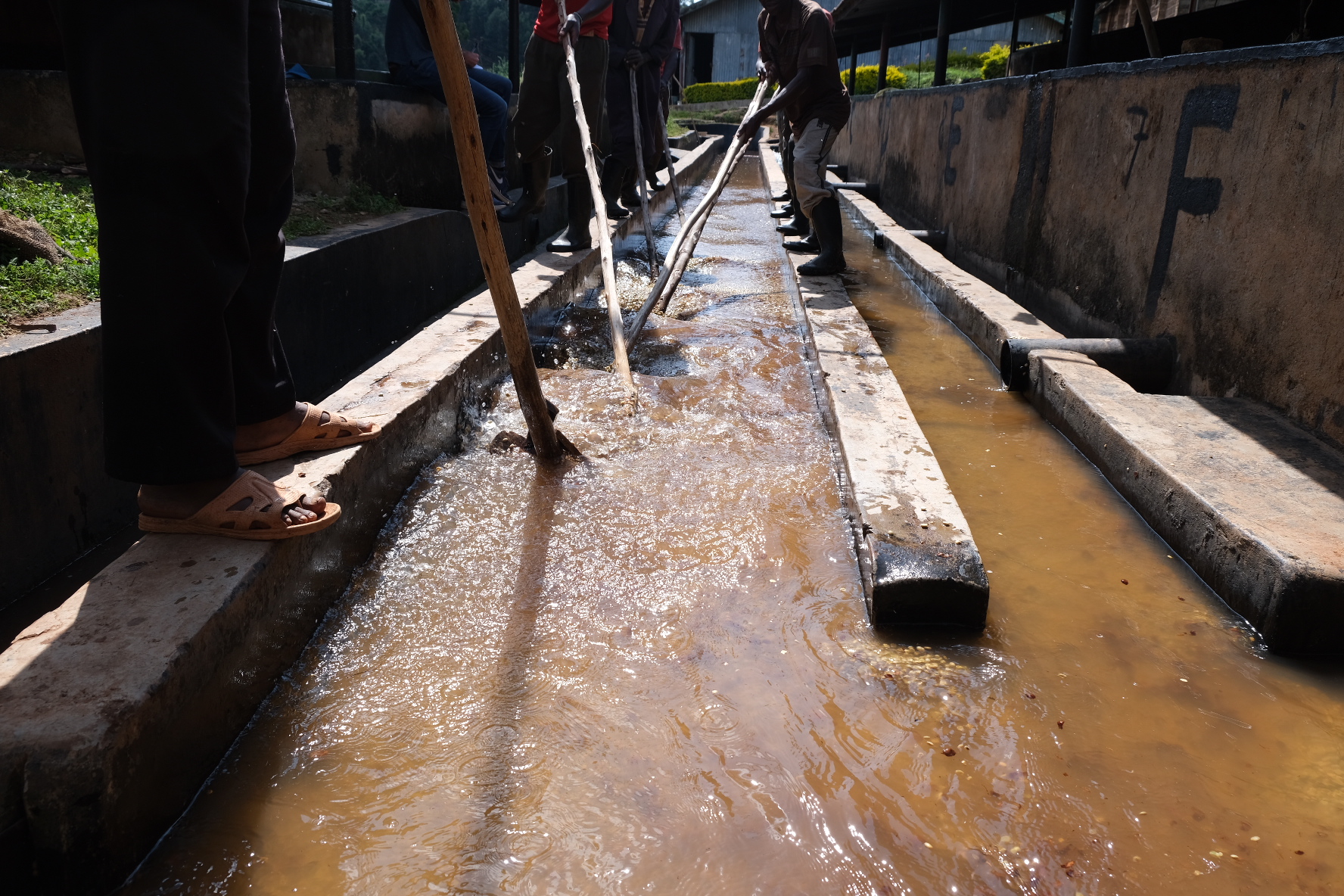
Front Street believes that Kenya's 72-hour washing process can make coffee beans cleaner, brighter and fuller in flavor.
The brewing parameters of this coffee bean on Front Street in Asalia, Kenya are as follows:
Filter cup: Hario V60
Water temperature: 90℃--93℃
Powder: 15g
Powder water ratio: 1:15
Abrasion: EK43s #10 (80% pass rate of Chinese standard No.20 sieve)
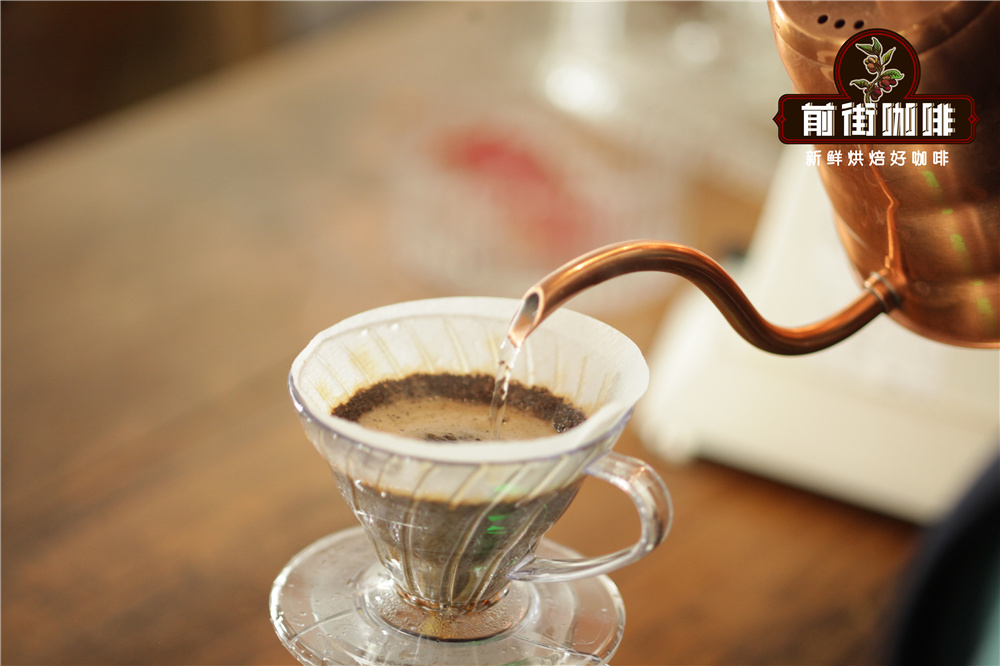
The front street adopts a three-stage water injection brewing method: steam with 30 grams of water for 30 seconds, fill the water in the second circle to 125 grams, wait until the water level drops to expose the powder bed, continue to fill the water to 225 grams, and then remove the filter cup when the coffee liquid completely flows into the sharing pot. The extraction time is 2 minutes.
For more coffee bean information, please pay attention to coffee workshop (Weixin Official Accounts cafe_style) professional coffee knowledge exchange, please add micro signal kaixinguoguo0925
Important Notice :
前街咖啡 FrontStreet Coffee has moved to new addredd:
FrontStreet Coffee Address: 315,Donghua East Road,GuangZhou
Tel:020 38364473
- Prev
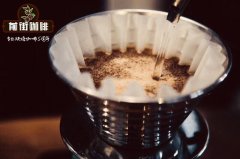
Where is the origin of Kenyan coffee beans? Kenyan coffee is sour and unsour, a sour aroma that surrounds the beam for three days.
For more information about coffee beans, please follow the front street of Coffee Workshop (Wechat official account cafe_style). Kenya Coffee introduces Kenya as an important player in East Africa in the coffee world and is a leader in both its coffee quality and its business strategy. The excellent coffee produced here has a clear, bright and rising flavor throughout the front and back of the tongue.
- Next

Are the coffee beans grown in Kenya Arabica? the sour aroma coveted by Kenyan coffee beans
Professional coffee knowledge exchange more coffee bean information please follow Coffee Workshop (Wechat official account cafe_style) Front Street-Kenya Coffee introduction Kenya's coffee producing areas are mainly concentrated in the mountains of Kenya (Mt. The plateau region represented by Kenya). Tropical climate and acid red volcanic soil provide a natural and suitable growth environment for coffee. The main boutique coffee producing areas come from
Related
- Beginners will see the "Coffee pull flower" guide!
- What is the difference between ice blog purified milk and ordinary milk coffee?
- Why is the Philippines the largest producer of crops in Liberia?
- For coffee extraction, should the fine powder be retained?
- How does extracted espresso fill pressed powder? How much strength does it take to press the powder?
- How to make jasmine cold extract coffee? Is the jasmine + latte good?
- Will this little toy really make the coffee taste better? How does Lily Drip affect coffee extraction?
- Will the action of slapping the filter cup also affect coffee extraction?
- What's the difference between powder-to-water ratio and powder-to-liquid ratio?
- What is the Ethiopian local species? What does it have to do with Heirloom native species?

